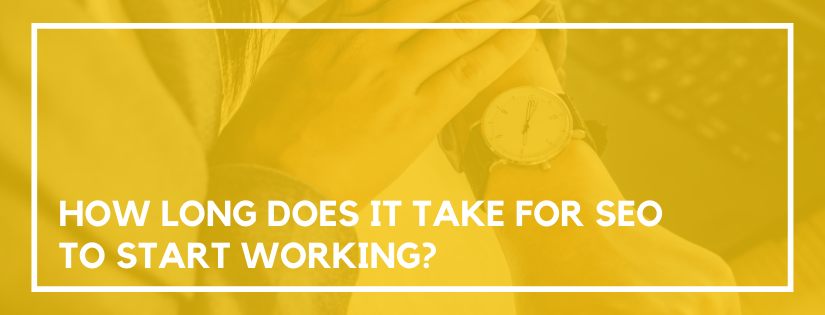So, here’s the problem. You’re doing all the things. You’ve done your on-page optimizations, you have a sitemap, you added internal links. But, you still have basically no traffic. Your numbers are embarrassing. How long does it take for SEO to start working?
The sad truth is SEO takes a while before you start seeing results. Of course there are several variables that can impact the speed but it’s important to be realistic about how long it should take going into it. As I outlined in the article about how long it takes to learn SEO, it can take anywhere from six months to two years to start seeing results. This can fluctuate quite a bit depending on how competitive your particular industry is, but this is a good estimate to go by.
Although it can take a while to start building some momentum, once it starts it generally continues. If you get a good routine down and regularly build content that creates a wonderful foundation. When you finally start seeing the traffic you want you just need to keep doing more of what you’re already doing.
If you are getting tired of waiting for your traffic to get to where you want it to be, here are a few ways you can speed up the process.
4 Ways to Make the SEO Process Faster
Revisit Blogging Frequency
Adjusting your blogging frequency is one of the best ways to adjust the length of time it takes to see SEO results. The more content you create, the faster you’ll see results. (Of course, this does need to be high-quality content.)
As a rule of thumb, you should aim to create weekly blog content. If you can’t, that’s fine! You can choose to post bi-weekly or monthly content. You just need to understand that it will take longer to see results. And if you already post weekly and want to see results faster then post even more often. Post daily if you can, or three times a week. Post as often as you can comfortably post high-quality content.
You have to find a balance between how much time you can find to spend on content creation and how fast you want to grow your website.
Perform Keyword Research
To grow traffic to your website you need to create content people are searching for. You need to perform keyword research. Find terms that have some traffic and are low competition. Don’t get too carried away about search volume. As long as people are searching for it and it isn’t crazy competitive it’s worth writing content for. If it starts ranking for that one keyword, chances are there are a handful of much longer phrases that it will rank for as well. So don’t get too caught up on low traffic. Those are just estimates and when you’re starting, low traffic is better than no traffic.
Look at Impressions
It can feel discouraging in the beginning. It can also feel discouraging a year or two into the project. It feels discouraging the entire time you aren’t seeing traffic where you want it. When this happens, look at your search impressions. You can find this data in Google Search Console (not Google Analytics). Search impressions do not all result in clicks. The clicks are the site visitors that show up in Google Analytics. But before they clicked, they saw the result in Google, and that registers as a search impression.
Since you get many more impressions than clicks it is a much prettier metric to look at when your numbers are low. More importantly, it gives you an idea of how you are trending. If you only get a few visitors here and there it’s very difficult to figure out a trend. Since there are a larger number of impressions, you can see how you’re trending. If your impressions are improving that means you are going in the right direction. Next, clicks will improve and then you’ll start seeing the traffic in your Google Analytics account you’ve been wanting.
Leverage ClearPath Online
If you’re looking for an SEO shortcut, the ClearPath Online DIY SEO Tool can help. It’s pre-populated with digital marketing tasks so you can grow an organic audience – step-by-step without getting overwhelmed.
In Summary
SEO does take time to see results. Be patient. Work on creating a good routine for content creation and then stick with it. If you are consistent, you will start to see results.
Do you want to listen to this article? Here’s the podcast episode:
